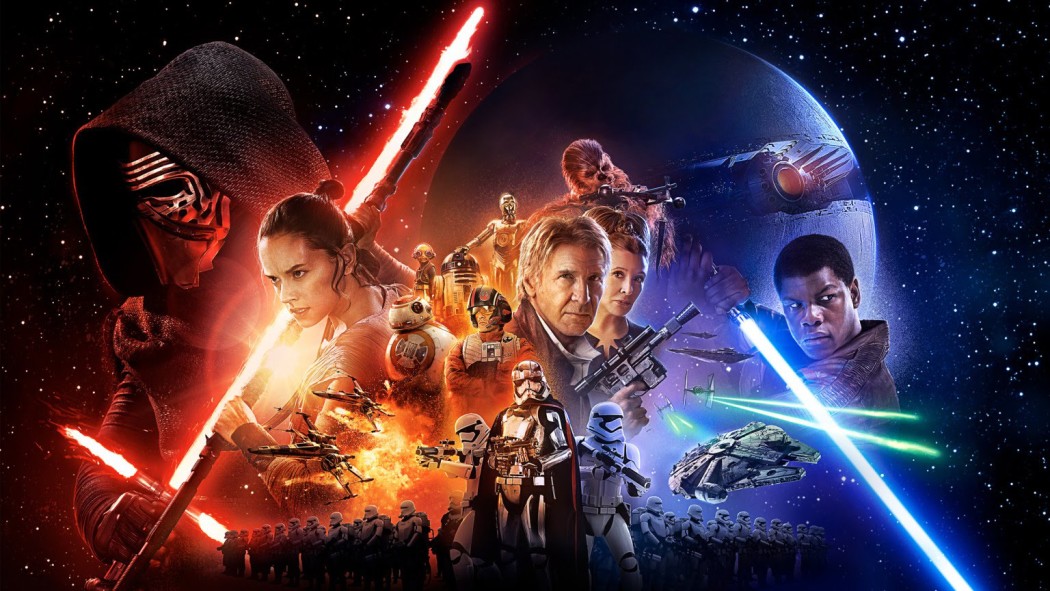‘Star Wars’: Why the Force stays with us
It is exceptionally rare for a story to take hold of a culture’s imagination so completely that it becomes an essential part of the culture itself. “Star Wars” is one such story.
Whether you were alive or not when the original film was released in 1977, whether you treasure the stories as classics or hold them at arm’s length, whether or not you’ve even seen the films, nearly everyone has some kind of relationship with the Skywalker saga. These are stories that have transcended their medium to become fables – no longer simply movies, they are the legends we have adopted as our modern mythology.
But why “Star Wars”? Why, of the thousands – if not millions – of stories we could choose from, do we most highly treasure a simple space fantasy about nobodies who saves the galaxy, and how, nearly 40 years after the release of the original film, are these stories more popular than ever?
Part of the films’ universal and lasting appeal can be found in the structure and arc of their story. When young filmmaker George Lucas wrote the screenplay for 1977’s original “Star Wars,” he took great pains to ensure that the story followed the structure of the “Hero’s Journey,” a concept theorized by writer and mythologist Joseph Campbell in his 1949 book “The Hero With a Thousand Faces.” In Campbell’s words:
“A hero ventures forth from the world of common day into a region of supernatural wonder: fabulous forces are there encountered and a decisive victory is won.”
Campbell argued that this template was followed by myths and stories in nearly every culture around the world – from the legends of Greek and Roman mythology to the lives of Moses, Jesus, Mohammed and Buddha. Luke Skywalker’s journey follows this narrative almost beat for beat, and the “Star Wars” saga’s mythic sense of grandeur is largely due to its structural similarities to history’s oldest and greatest stories.
On a less literary level, the “Star Wars” films also contain some of the most memorable sights, sounds and characters in cinema history. Debra Jenson, a professor of Journalism and Communication as well as a lifelong Star Wars fan, vividly recalls some of her earliest memories of the movie.
“The sound of the lightsaber battle from ‘The Empire Strikes Back’ is one of the most memorable moments from my childhood,” Jenson said. “When I hear that sound, the lightsabers buzzing and clashing, I am in my friend’s basement watching the movie.”
For Jenson, the major appeal has always been the fact that “Star Wars” presents a story where a person’s beginnings matter less than who they choose to be.
“Luke was every kid, so ‘Star Wars’ made it so that anybody from anywhere can be the hero,” she said. “And that’s huge. It doesn’t matter what you’re born into, you get to make a choice and be a hero.”
Perhaps the key to “Star Wars’” success has been in the marriage of the grand and mythical aspects of its story with the warmth and personality of its presentation and characters. As audiences, we’re enthralled and awed by the flight of the Millennium Falcon or the clash of lightsabers, and we’re swept away by the scope of a grand galactic fairy tale (there’s a reason I refer to the series as space-fantasy rather than science-fiction).
But what keeps our culture so fascinated with the Star Wars legend has more to do with the characters, the emotions and the iconography: We all empathize with a boy staring longingly at the twin suns on his horizon, wishing his life was simply more. We all marvel at a little backwards-talking swamp goblin lifting a spaceship out of the water with his mind.
Mere months ago, a collective smile spread across all of our faces as a scrappy young heroine, her journey just beginning, offered an old, lost lightsaber to an old, lost man. And we all share the moments of silent anticipation as cool blue letters tell us this story takes place “A long time ago in a galaxy far, far away….”, right before our hearts start soaring in time with glorious, unforgettable music (if there is any real magic in the world, it is undoubtedly found in John Williams’ “Star Wars” scores).
Stories serve many purposes. We tell some stories to entertain, others to inspire or to show us how we can be better. Some stories are used to teach, and others are used to warn us of what we might become. “Star Wars” is the rare kind of story that does all of these things. It may always remain a mystery that “Star Wars” exploded onto the scene and stuck in our culture’s consciousness the way it did, but we don’t need to fully understand the phenomenon to be a part of it. “Star Wars” is as popular as it’s ever been, and it isn’t going away any time soon. Like the Force, it will be…well, you know the rest.
– Daniel Kirkham was going into Tosche station to pick up some power converters, but he wrote this article instead.

